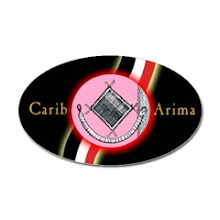
Trinidad - Since 1995 when the existence of the Caurita Stone was first publicised in our local newspapers, there has been much speculation as to the origins and meanings of the etchings on its surface. Back then, the stone was known as the "Mystery Stone of Caurita".
Today, the site, in the hills of the Maracas Valley where the stone is located, is the main destination of hikers and descendants of Amerindian ancestry.
Ricardo Bharath Hernandez, chief of the Santa Rosa Carib community, and Cristo Adonis, shaman for the community, led us on a trip up to Caurita, which included members of the National Heritage Council Rawle Mitchell and Niketa Yearwood.
Adonis, well acquainted with the natural vegetation of the area, pointed out several plants that usually go unnoticed by the untrained eye. The roots and leaves of most of these plants are composed of important medicinal ingredients for various illnesses and diseases. Adonis identified many of these precious plants amid the understorey of the forest.
As the trail wound through estates of cocoa, coffee and mixed species of forest, a bubbly stream criss-crossed the way several times. Immortelle trees provided sanctuary for oropendolas, busy as always with the duty of building nests and caring for their young. A large ficus tree welcomed a bay-headed tanager onto its shady bough.
It was just below the area of a large bamboo stool that Adonis revealed how he first found the stone.
"I was in these hills searching for the stone. My little son was with me at the time. When we reached this bamboo stool, an agouti dashed up the ridge ahead. My son said, 'Where the agouti run is where the stone is.' We headed up this ridge, following the direction of the agouti, and found the stone alongside the track."
Eager now to reach the stone, our party headed up the ridge, and just as Adonis had described, there it was, sitting prominently at the side of the trail.
The height and width of the stone is roughly six feet by eight feet, and drawings have been etched into the top half of its exposed surface at the front. These drawings show faintly between the growing mosses that carpet the stone. Mitchell promptly got to work cleaning the stone, so the depictions on the surface could be seen clearly.
Members of the Santa Rosa Carib community view this stone as having special spiritual significance and regard it as part of their natural heritage. Some of the etchings identified depict a chief, other people in ceremonial wear and a deer.
The chief and the shaman present gave offerings to the four porters or gateways: El Tucuche to the north, El Cerro del Aripo to the east, San Fernando Hill to the south and a mountain in Venezuela's Paria peninsula to the west.
It is agreed among Amerindian communities in Trinidad that etchings on the stone bear spiritual significance. The site of the Caurita Stone is now regarded as an important part of the ongoing quest for knowledge and understanding of Amerindian ancestral occupation and life on this island.
Sites such as this bear testimony that our First Nation did set the path for our present way of life and so, as an integral part of our anthem, do represent an important part of our heritage for the future.
Author: Heather-dawn Herrera
Source: Trinidad Express Newspapers




